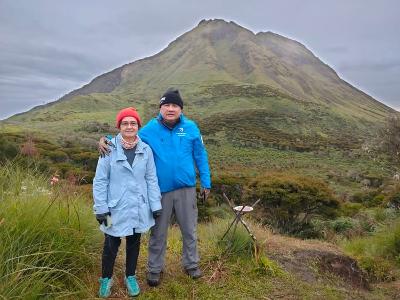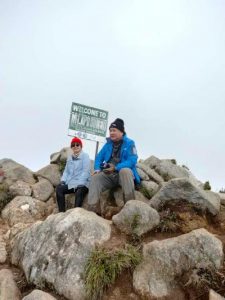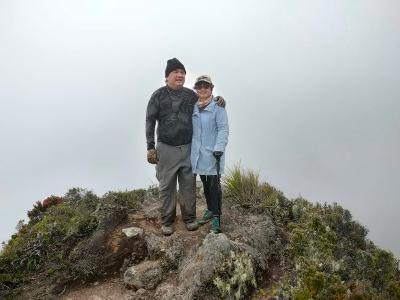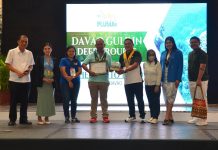When coronavirus disease 2019 (COVID-19) was first reported in Wuhan, China, the Philippines never thought it would experience what China had gone through.
But due to international travel, and because of the influx of visitors from other countries, the Philippines was not spared. By March of 2020, the first case of COVID-19 was reported. Since the number of those infected with SARS-CoV-2, the coronavirus that causes the disease, increased.
While most of the infected recovered, there were those who did not survive the ordeal. Among those who perished from the disease were fashion designer Ito Curata (60), former Cebu congressman Antonio Cuenco (84), ex-Senator Alfredo Lim (90), ex-Commission on Elections (COMELEC) Chairman Sixto Brillantes (80), bishop Oscar Cruz (85), vlogger Lloyd Cadena (26), screenwriter Nestor Torre, Jr. (92), singer Victor Wood (75), Davao del Sur governor Douglas Cagas (77), former Senator Heherson Alvarez (80) and former Philippine Charity Sweepstakes Office (PCSO) General Manager Manuel Morato (87).
Even doctors were not spared: Dr. Greg Macasaet and his wife Evalyn, both anesthesiologists at the Manila Doctors Hospital; Dr. Raul Jara, former president of the Philippine Heart Association; Dr. Leandro Resurrecion III, of the Philippine Children’s Medical Center; Dr. Kharen Abat-Senen, lone neonatologist in Valenzuela City; and Dr. Sally Gatchalian, head of the Philippine Pediatric Society.
But there were some who survived. One of those who was lucky to come out alive after fighting the dreaded disease is Dr. Teodofredo Esguerra, whose story I wrote for EDGE Davao. Another one is Dr. Rafael R. Castillo, who shared his bout in his column in Philippine Daily Inquirer.
Then, there’s Dr. Roy B. Ferrer, who is currently an assistant secretary of health. He was formerly the acting president and chief executive officer of the Philippine Health Insurance Corporation (PhilHealth).
Dr. Ferrer was infected with the COVID-19 virus at the height of the pandemic in November last year. He was admitted to the intensive care unit at the Southern Philippine Medical Center (SPMC) for two weeks as he suffered from severe form (“critical stage”) of pneumonia caused by COVID-19.
“I was admitted right away because of persistent cough and oxygen desaturation,” Dr. Ferrer recalled. “I was closely monitored and as the days passed by, my oxygen desaturation became low. My coughing was so intense that breathing became difficult. My doctor advised that I had to be intubated. My daughter Carmelle, who was a first-year internal medicine resident physician at that time, gave consent. She was so worried and was always crying at that time.”
But Dr. Ferrer survived the ordeal. When he was getting better, he was transferred to another room where he stayed for a week.
His wife, Lalaine, was also infected but she only experienced the moderate form of the disease. Her complaints were throat itchiness and joint pains. She was admitted to the COVID ward to monitor her heart because she has skipped beats. After 10 days, she was finally released.
Dr. Ferrer, on the other hand, went home after his 21st day of treatment with a negative repeat swab. “My stay at the ICU for two weeks made me closer to my Creator as I was always praying day and night to spare not only me but other afflicted frontliners as well from this ordeal,” Dr. Ferrer said.
It wasn’t until six months later after the horrible ordeal that the couple finally had control over their lives again.
“After going through all that, we started to do moderate exercises to regain our usual strength,” Dr. Ferrer said. Then, they decided to climb Mount Apo, the country’s highest peak (whose elevation is 2,954 meters above sea level).
“I love to go biking and getting the glimpse of Mount Apo on the road is an additional bonus,” he said. His wife was cautious at first but knowing that her husband will be with her, she finally relented.

So, on the eve of Mother’s Day (May 9, 2021), the couple jumped off via the Maag trail – after passing through all the requirements needed to scale Mount Apo, including medical clearance of course.
After taking the orientation at the Kidapawan Tourism Office, the couple were ready for the adventure.
“The first day of our climb was really tough,” recalled Dr. Ferrer, now in his late 50s. “The slowly ascending terrain, the climbing and jumping and going through rough trails was really challenging and exhausting.”
The climb would not be possible without their guide and porters: Ver, Michael, and Joel. “They made our climb ‘lighter’ for us,” he said. “During the course of the trail, I experienced leg cramps. We had to stop for a while to take the much-needed rest.”
Although scaling Mount Apo was challenging for the couple, the sights they encountered along the way were worth it.
“Along the way, despite being exhausted, we were refreshed by the beauty of the endemic flora and the fauna of the Davao icon,” he said. “Definitely breathtaking scenes captured our eyes; they were no longer imagined. We took the hike and climbed at a stride – at our own pace.
Once he gasped for breath, Dr. Ferrer tapped his guide asking him to take a rest and enjoy the sight.
“We had our lunch at the first watering hole,” he said. “We had fresh spring water and a tasty meal cooked by our guide Ver. Indeed, it was cool and refreshing. The water was better than the bottled water I was carrying.”
His wife Lalaine was more relaxed than him on the climb. “I would say, it’s with my weight I think. But seriously, it’s me who was on the critical stage, right? Well, so much for excuses. She’s really ‘stronger’ than me on the climb,” he admitted.
They reached the Maag bunk house at four in the afternoon. But they set up a tent not so far from a beautiful lake on the site.
“We rested after eating our dinner,” he said. “We slept like babies. The exhaustion left the rain and very cold foggy night almost unnoticed. My thermal pants and jacket, socks, and malong seemed useless as the coldness of the night still managed to penetrate our skin.”
They were so tired that they never noticed the rain soaked some of the clothes they brought with them.
They woke up at 4 am the following day. After taking coffee and sandwiches and saying the morning prayer, they jumped off to the summit.
“Behold the view of Mount Apo Summit on a clear sky when the sun rose at 5 in the morning,” he wrote later. “The trek ahead was winding with shrubs and short grasses on the way up. We ate our breakfast at 9000 feet above sea level. We can see a sea of clouds beneath us and the camp site view and the geothermal plant were so minute.”
While eating their breakfast at the top of Mount Apo, Dr. Ferrer and his wife sat beside each other and took time to have a glimpse of the sea of clouds beneath them.
“When we were small kids, we were told heaven is where you are in the clouds,” he penned. “I felt heaven at this very moment, when I sat beside my wife Lalaine watching the sea of clouds beneath us.”
After that magical moment, they continued their trek going up by passing through caves of cogon grasses. “It was our first time to see cogon grass taller than sugar cane,” he said. “Passing through, we have to protect our eyes not to be hit by cogon grasses or they would cause injury or harm our eyes.”
The thinning of air at this stage of the ascent was already obvious. They crossed big stones, shrubs and wild berries on the trail. It was a big help that they have trekking poles for fifty something folks.
But the most challenging part was when they were nearer the top, which is almost a vertical climb. “You have to have good grips and shoes when climbing at this stage,” he said. “My very good guide and porter buddies were very attentive to us. Lalaine and I reached the summit at 12 noon in a clear sky.”
Now, it was time to thank God for their second lives. “We thanked the Almighty for keeping us safe, for healing us, for all the blessings, and for the clear sky,” Dr. Ferrer said. “We ask the Lord to continue to bless us, our family and friends!”

They stayed at the summit for an hour.
Then, it was time for them to go down. On descent, still on the uppermost level, there were boulders to conquer. They took their lunch in a cave. “It was the most delicious lunch (bulalo) we had on the trail,” he said.
After the sumptuous lunch, they rested for a while. “The place was so clean,” he observed. “No vandals. We carried all our garbage with us.”
They continued their descent as the weather started to become gloomy. Then winds and light rain came. About a third on the way to descent, Dr. Ferrer requested a coffee break. But since there was no coffee at all, the guide offered him noodles.
But he turned down the offer since the noodles would make them heavier on descent. no, it will make us heavier on descent. So, they continued their descent but the trail was becoming slippery because of the rain. The cold wind started to penetrate their jackets.
They decided to cover their jackets with garbage plastic bags to serve as rain and wind protectors. He slipped and went down on a watery trail, and lo and behold! beside him was a coffee candy still wrapped. “Hulog ng langit. Salamat Lord sa kape,” he quipped.
Continuing on descent, Lalaine told him to be careful and to get hold on a cogon grass. Then, he lost his balance and fell while the cogon grass he held got entwined at his right arm. The porter at his back tried to grab him but went down with him. The weight he carried turned upside down.
“The cogon grass held us,” he recalled. “If not for the cogon grass, we could have fallen down below and could have sustained serious injuries,” Dr. Ferrer said. Lalaine and the group were shocked by what had happened.
It was almost dark when they reached the watering hole. “We ate the noodles and had some sandwiches,” he said. “We were soaked wet and rested for a while inside the ‘cave’ of cogon grasses.”
Then, darkness completely engulfed the place but they continued their trekking. What happened next was like a script from a movie. “Our headlamps were working,” he recalled. “The rain was on and off. There were times the clear sky would light our path; there were times it was dark and drizzling. We ate candy bars while walking.”

Based on the said experience, Dr. Ferrer now believes that it was harder going down than going up. When the rain stopped, they could see the stars up in the sky. But what the doctor didn’t notice were the fireflies on the trees.
They reached the bunk house soaked, exhausted and hungry at 9 pm. “We were so dead tired,” he said. After changing clothes and sipping hot coffee, they were defeated by sleep.
They woke up at six in the morning and had an early breakfast, which had vegetables as viand. Of course, there was coffee to beat the cold weather. They left Camp Maag at 7 in the morning to go to the pick-up site. It was a 5-hour hike “on our pace.”
At five pm, the group was already in the hotel. “We were so thankful,” Dr. Ferrer said. “We never thought that COVID-19 survivors like us – at ages 57 and 54 – could scale Mount Apo on Mother’s Day.”
If the Ferrer couple could conquer the dreaded COVID-19, then there’s no way they cannot conquer Mount Apo.






